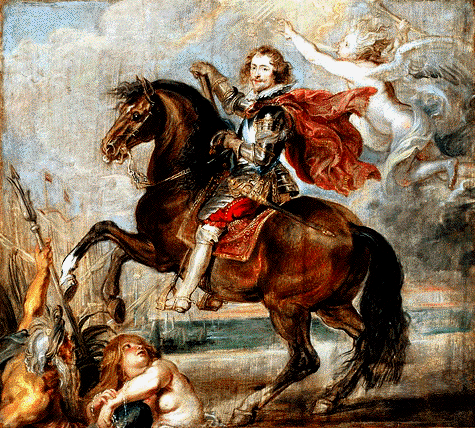|
Modello of
Rubens's Portrait of George Villiers, Duke of Buckingham
| |
 |
|
| Rakishly handsome, with a dancer's leg, Villiers was brought to the English court in 1614 by the Pembroke faction, as James I was tiring of his favorite, Robert Carr, Earl of Somerset. Villiers was made a gentleman of the bedchamber the next year and, after Somerset's disgrace, was named Earl of Buckingham (1617), Marquess (1618), and Lord High Admiral (1619) in rapid succession. Buckingham quickly gained control of the king's patronage, granting lucrative monopolies to his relatives. On a diplomatic mission to Paris in 1625 to arrange Prince Charles's marriage-by-proxy to Henrietta Maria, sister of the king of France, Villiers met Rubens, the master painter north of the Alps, who, from 1623, was himself a diplomat. One of the chief collectors of his time, Buckingham commissioned Rubens to paint an equestrian portrait of him. This modello, the study for a large painting destroyed by fire, shows Buckingham as General of the Fleet. Beneath him to the left are Neptune, the god of the sea, and a sea nymph holding a string of pearls symbolizing the riches of the ocean that England claimed. Behind them, a fleet of ships sits at anchor, while above, Fame scatters flowers in homage. |